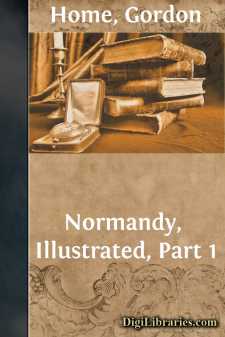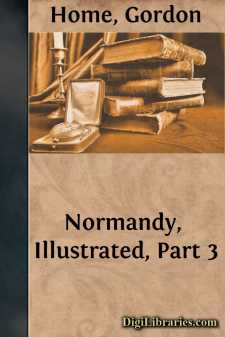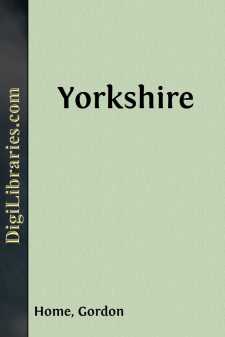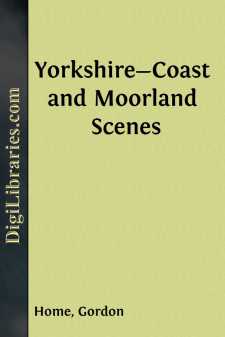Categories
- Antiques & Collectibles 13
- Architecture 36
- Art 48
- Bibles 22
- Biography & Autobiography 813
- Body, Mind & Spirit 142
- Business & Economics 28
- Children's Books 17
- Children's Fiction 14
- Computers 4
- Cooking 94
- Crafts & Hobbies 4
- Drama 346
- Education 46
- Family & Relationships 57
- Fiction 11829
- Games 19
- Gardening 17
- Health & Fitness 34
- History 1377
- House & Home 1
- Humor 147
- Juvenile Fiction 1873
- Juvenile Nonfiction 202
- Language Arts & Disciplines 88
- Law 16
- Literary Collections 686
- Literary Criticism 179
- Mathematics 13
- Medical 41
- Music 40
- Nature 179
- Non-Classifiable 1768
- Performing Arts 7
- Periodicals 1453
- Philosophy 64
- Photography 2
- Poetry 896
- Political Science 203
- Psychology 42
- Reference 154
- Religion 513
- Science 126
- Self-Help 84
- Social Science 81
- Sports & Recreation 34
- Study Aids 3
- Technology & Engineering 59
- Transportation 23
- Travel 463
- True Crime 29
Gordon Home
Gordon Home was a British writer and artist born in 1878, known for his travel writing and historical works. He authored numerous books that detailed the landscapes, history, and architecture of the British Isles and parts of Europe. Home's detailed illustrations and engaging prose brought the charm and heritage of various regions to life, making significant contributions to early 20th-century travel literature.
Author's Books:
Sort by:
by:
Gordon Home
CHAPTER I SOME COMPARISONS "…and so at noon with Sir Thomas Allen, and Sir Edward Scott and Lord Carlingford, to the Spanish Ambassador's, where I dined the first time…. And here was an Oxford scholar, in a Doctor of Laws' gowne…. And by and by he and I to talk; and the company very merry at my defending Cambridge against Oxford."—PEPYS' Diary (May 5, 1669). In writing of...
more...
by:
Gordon Home
CHAPTER I Some Features of Normandy Very large ants, magpies in every meadow, and coffee-cups without handles, but of great girth, are some of the objects that soon become familiar to strangers who wander in that part of France which was at one time as much part of England as any of the counties of this island. The ants and the coffee-cups certainly give one a sense of being in a foreign land, but when...
more...
by:
Gordon Home
Concerning Mont St Michel So, when their feet were planted on the plainThat broaden'd toward the base of Camelot,Far off they saw the silver-misty mornRolling her smoke about the Royal mount,That rose between the forest and the field.At times the summit of the high city flash'd;At times the spires and turrets half-way downPricked through the mist; at times the great gate shoneOnly, that...
more...
by:
Gordon Home
PREFACE This book is intended to put in the smallest possible space the means by which one may reach the chief places of interest in England and Wales. It will possibly make many holidays, week-ends, or isolated days more enjoyable by placing a defined objective before the rambler. Places within an hour or two of London are in the front of the book, so that as one turns over the pages one is taken...
more...
by:
Gordon Home
The tolling of the deep-toned bourdon in the cathedral tower reverberates over the old town of Evreux as we pass along the cobbled streets. There is a yellow evening light overhead, and the painted stucco walls of the houses reflect the soft, glowing colour of the west. In the courtyard of the Hotel du Grand Cerf, too, every thing is bathed in this beautiful light and the double line of closely trimmed...
more...
by:
Gordon Home
CHAPTER IACROSS THE MOORS FROM PICKERING TO WHITBYThe ancient stone-built town of Pickering is to a great extent the gateway to the moors of North-eastern Yorkshire, for it stands at the foot of that formerly inaccessible gorge known as Newton Dale, and is the meeting-place of the four great roads running north, south, east, and west, as well as of railways going in the same directions. And this view...
more...
by:
Gordon Home
CHAPTER IACROSS THE MOORS FROM PICKERING TO WHITBY The ancient stone-built town of Pickering is to a great extent the gateway to the moors of Northeastern Yorkshire, for it stands at the foot of that formerly inaccessible gorge known as Newton Dale, and is the meeting-place of the four great roads running north, south, east, and west, as well as of railways going in the same directions. And this view...
more...
by:
Gordon Home
CHAPTER I Concerning those which follow "Brother," quod he, "where is now youre dwellyng,Another day if that I sholde you seche?"This yeman hym answerde, in softe speche:"Brother," quod he, "fer in the north contree,Where as I hope som tyme I shal thee see." The Friar's Tale. Chaucer. In the North Riding of Yorkshire, there is a town of such antiquity that its...
more...
by:
Gordon Home
CHAPTER I THE PILGRIM'S APPROACH TO THE CITY It was on April 24, 1538, that a writ of summons was sent forth in the name of Henry VIII., "To thee, Thomas Becket, some time Archbishop of Canterbury"-—who had then been dead for 368 years—-to appear within thirty days to answer to a charge of treason, contumacy, and rebellion against his sovereign lord, King Henry II. But the days passed,...
more...
by:
Gordon Home
CHAPTER I Some Features of Normandy Very large ants, magpies in every meadow, and coffee-cups without handles, but of great girth, are some of the objects that soon become familiar to strangers who wander in that part of France which was at one time as much part of England as any of the counties of this island. The ants and the coffee-cups certainly give one a sense of being in a foreign land, but when...
more...











